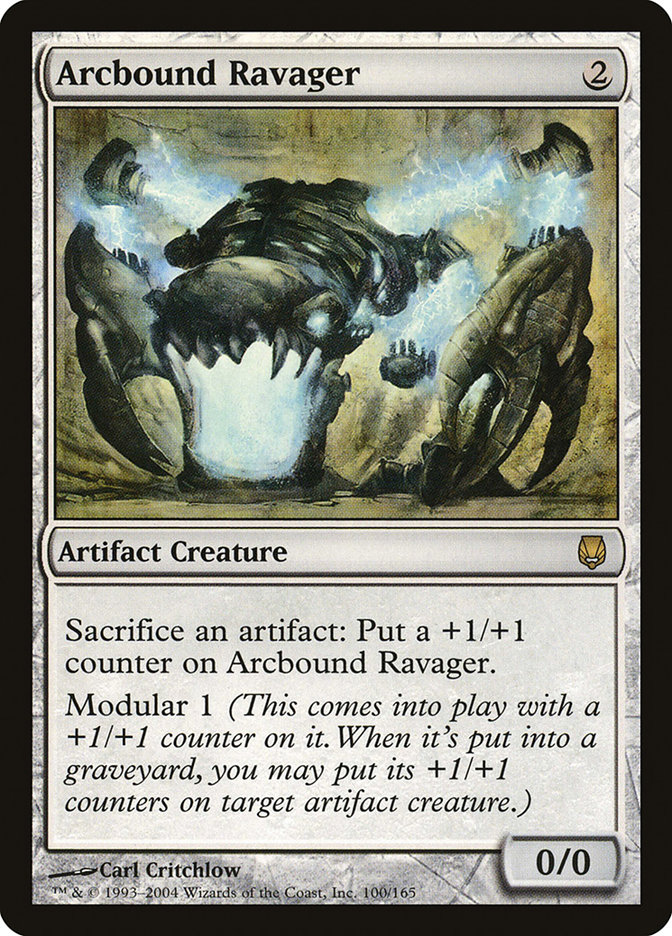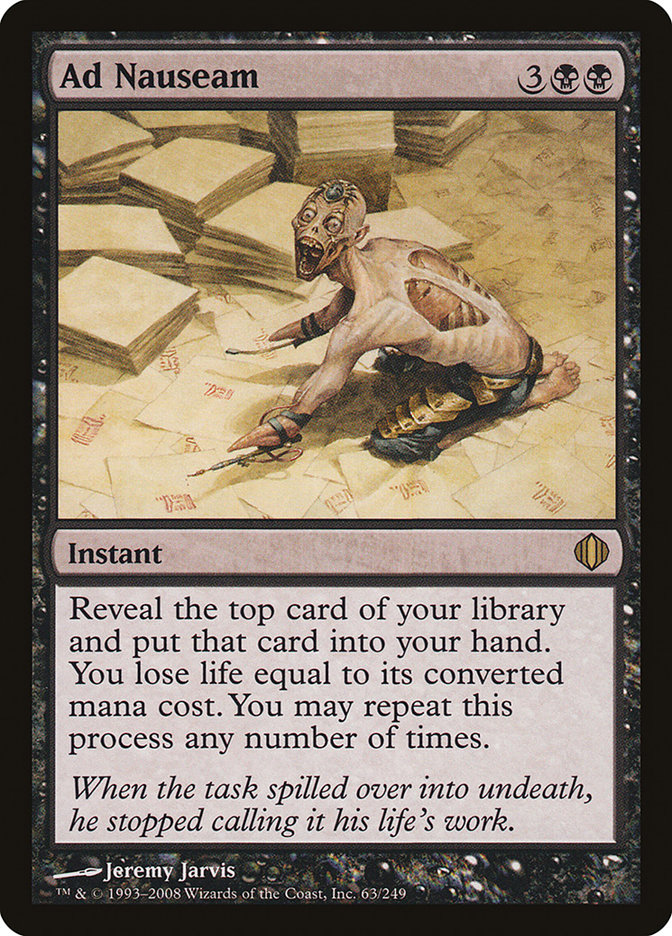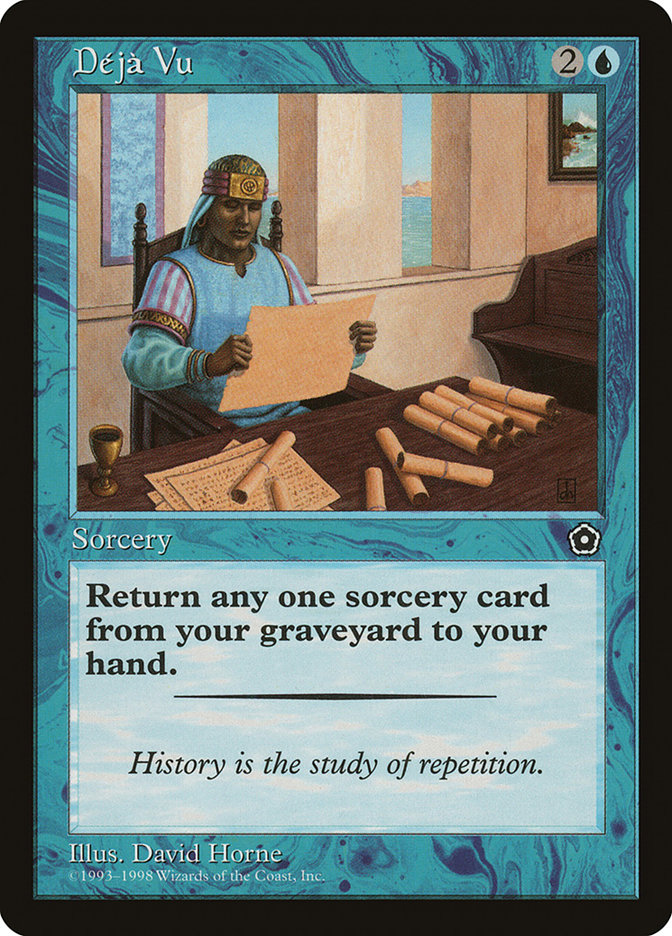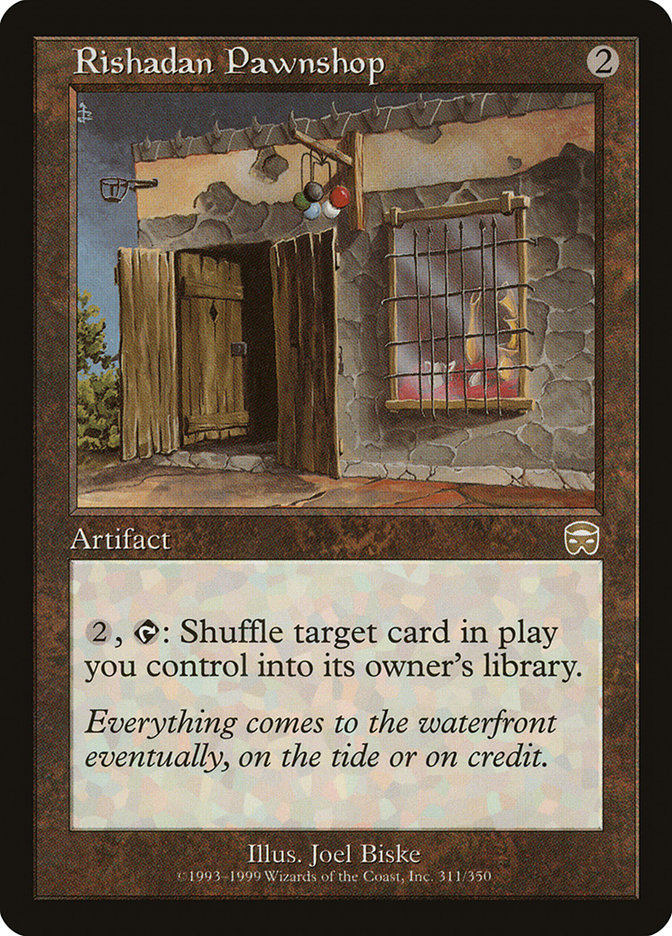Over the past several years, I’ve developed a reputation for defending some of Wizards of the Coast’s more controversial decisions. I feel like the Magic community is prone to overreaction, often ascribing nefarious purposes to mundane changes and Chicken Little-ing about “the death of Magic” over shifts and policies that end up not mattering very much. I get that change is scary, but that doesn’t mean it’s apocalyptic.
Today’s article is different. It’s not about some large Magic apocalypse—at this point, I expect the game to outlive me in some form or another—but it is about one of Wizards of the Coast’s business decisions that’s become increasingly problematic and misguided in recent months. Since the problem is directly related to the game’s secondary market and financial future, I knew that I needed to cover it in this column.
The Masters sets are broken. It’s time we talk about it.
Why Masters Sets Are Necessary
Before we get into the problems with the Masters sets, let’s talk about why they exist in the first place. A quick history lesson:
From 1999-2008, Magic’s player base rose and fell depending on the quality of the sets. It ebbed during Mercadian Masques, flowed during Onslaught, ebbed again during the Ravager Affinity era and Kamigawa block, flowed again when Ravnica came out, and ebbed again during Time Spiral. If Magic was ever going to “die,” it probably would have been during one of those lulls.
But everything changed from 2009-2012. From Shards of Alara through Return to Ravnica, the player base doubled every single year. Not only were the sets really good, but Duels of the Planeswalkers brought a ton of new blood into the player base. This was Magic’s biggest boom since Revised and Ice Age.
It’s hard to say what’s happened in the years since Return to Ravnica. My guess is that the player base has shrunk by 10-15% since then, but that’s based on strictly anecdotal evidence. It’s possible that the player base has grown slightly, or that is has mostly remained stagnant. Either way, it’s pretty clear that the wild growth from 2009-2012 has not continued.
Meanwhile, the Modern format was created in 2011, shortly before Magic’s player base peaked. In the years since, it has become (arguably) the most popular Constructed format. Most competitive Magic players have at least one Modern deck, including those who have picked up the game at some point over the past couple of years.
This would have been incredibly difficult without reprints. Even if we just take a look at a single Tier 1 Modern deck—Jeskai Control, say—we can pick out a couple of key cards that were originally printed in an older set.
Creatures (4)
Planeswalkers (1)
Lands (20)
Spells (35)

Path to Exile? That’s from Conflux. Spell Snare? Dissension. Cryptic Command? Lorwyn. Electrolyze? Guildpact. All of these sets were printed before the player base ballooned, along with supply.
Can you imagine the secondary market for these cards if they hadn’t been reprinted? Either Jeskai Control would cost three times what it does now, or the player base would have abandoned Modern for being too inaccessible. Cards from this era had to be reprinted, and throwing them in the occasional Standard set wouldn’t have been enough. Not only were many of these staples too powerful to see Standard play again, but there were hundreds of cards that needed to be reprinted as soon as possible.
Modern Masters was the solution, and it was a good one. The set was a major event, and finding packs anywhere close to their $6.99 MSRP was incredibly difficult. I lined up for an hour outside my local game store to play on their only day of drafting, and I attended the first Grand Prix Las Vegas as a way to get my hands on more of that sweet, sweet product. Modern Masters staples dropped in price by just enough to make the format more accessible (and stem the rising tide), but not by enough to prevent opening its chase rares from feeling like an event.
Modern Masters 2015 was also a real event, albeit not as big as the first. It was frustrating that Wizards of the Coast had raised the MSRP to $9.99, but not terribly surprising—after all, plenty of stores were already selling Modern Masters packs for $10 each, so it makes sense that Wizards of the Coast wanted a bigger slice of that profit. The set was more accessible—boxes were easy enough to get at MSRP this time around—but they didn’t linger on shelves for months. The second Grand Prix Las Vegas was just as fun as the first.
Not only did these sets give newer players a foothold into Modern at a reasonable rate, they allowed established players to increase their collection equity over time by buying staples right after a Masters set came out and holding onto them until they started ticking up again. Without these sets, I don’t think Modern would be nearly as popular or accessible as it is now. Masters sets are good, and Wizards of the Coast should keep printing them.
But not at the rate they’re printing them at now.
The Problem with Too Many Reprints
The first Masters set dropped in 2013. The second dropped two years later, in 2015. As of March 16, 2018, we’ll have gotten four Masters sets in two years—one every six months.
These current Masters sets were likely printed in quantities that even put Modern Masters 2015 to shame. That second wave of Eternal Masters boxes flooded the market and destroyed a lot of spec portfolios. Iconic Masters packs are hanging off racks in Target and Walmart. Even though the MSRP on that set is still a head-scratching $9.99, StarCityGames.com was selling boxes for $150 on Black Friday—that’s $6.25/pack. Even now, you can buy a box on SCG for just $7.30/pack.
I don’t have the figures to back this up, but my guess is that demand for Masters sets has dropped significantly in addition to the supply being massively increased. Why might fewer people be buying these packs? It’s a combination of several factors:
Fatigue. A Masters set every two years feels special. A Masters set every year still feels like an event. A Masters set every six months is an obligation. At the very least, it’s easier to skip one when you know there’s another right around the corner.
Lack of Cohesion. Modern Masters was clearly aimed at Modern players. Eternal Masters was kind of aimed at Legacy players, but with some random Vintage and Modern stuff thrown in. Iconic Masters was aimed at…well, I still don’t really know. Its marquee card, Mana Drain, is really just played in Cube and Commander. Its second-best card, Horizon Canopy, is a boring pull unless you’re a competitive Modern player. Everybody wants a couple of cards from Iconic Masters, but very few people want enough of them to warrant opening a ton of packs.
Lack of Excitement at Marquee Singles. Remember how we needed Modern Masters to reprint all those staples from the years before the player base ballooned in size? With a few scattered exceptions, all of those cards have been reprinted at least once, if not two or three times over the past couple of years. In 2013, people literally flew to Las Vegas and dropped from a Grand Prix after opening a Tarmogoyf prior to deck registration. In 2017, opening a Tarmogoyf might result in a fist-pump at the draft table, but that’s about as exciting as it gets. Each time one of these older cards is reprinted, it becomes a less exciting open.
And since the player base isn’t growing, it’s not like there are a ton of newer cards ready to take their place. There isn’t a single card in Shadows over Innistrad that’s worth more than $10 right now, but they’ll all be coming to Masters packs soon enough.
Frustration at Your Collection Losing Value. Modern is a heck of an investment. Whether you built up your collection by purchasing singles or you did it one Masters pack at a time, it’s still frustrating to see a card you spent a lot of money on get reprinted and watch as its value drops off a cliff. There’s at least one day every six months where I get frustrated at myself for holding onto a card or two that I should have known was getting reprinted. It’s not a great feeling, and it certainly doesn’t make me want to buy more $10 Modern packs.
An Aside on Format Accessibility
If you believe that Magic should be essentially free-to-play and you want everything reprinted to the point where even the poorest folks can play competitive Modern, I support your cause. The sounds like a more fun world to live in than this one, and there’s no doubt that Magic is one of the most expensive, least accessible games on the planet—to its detriment.
So why am I advocating for a more conservative reprint policy? Because Magic is going to remain fairly expensive for the foreseeable future, and the players who are hurt the most by these excessive reprints are all members of the game’s “middle class.”
Think about it. The folks who like to say “Magic is a game, not an investment, so don’t worry about the value of your cards” are likely among the game’s wealthiest players. They’ll be frustrated if their collection is significantly devalued, but it won’t matter all that much in the end. They can afford the loss, and they’ll be able to keep buying in without too much trouble.
On the flip side, many of the players who are the loudest in calling for infinite reprints don’t have a significant stake in the format and likely never will. Modern is sweet, and I don’t blame everyone who picks up Magic for wanting to play, but unless Wizards of the Coast moved to a drastically different business model, Eternal formats are going to remain at least somewhat expensive. It costs nothing to complain about this fact, so a lot of people are going to keep demanding that the price should drop, even though it’ll never get cheap enough for them to actually buy in.
But the rest of us have already bought into Modern to some degree or another. We’ve got thousands of dollars tied up in these silly cards, even though we might not make that much money in six months of work. We tell ourselves that this is okay because we can always sell our collections and recoup some of that money. It’s not an investment like stocks or bonds, but it’s not like buying a Monopoly board, either.
The reason why Modern cards are more expensive than Standard cards is because they’re supposed to hold their value for a longer period of time. But if you have to hold your breath every six months because of another Masters set tanking large swaths of your collection (in addition to the usual threads of bans and metagame shifts), you might think twice about dropping $280 on a set of Mox Opals. Meanwhile, that buy-in might be inconsequential for a wealthier player. By creating a Modern market that’s a little bit cheaper and a lot more volatile, you’re paradoxically pricing out a lot of your most loyal players.
I’m not saying that I want us to go back to a world of zero reprints where the barrier of entry is too darned high, but there has to be a balance between making the format accessible and making sure that we consumers feel safe when we drop tons of money on Magic cards. Right now, the rate at which Masters sets are being produced is tipping the scale too far in the other direction.
Fixing Masters Sets
Let’s take another look at those four problems that that I brought up in the last section and discuss possible fixes for them.
Fatigue. This one should be easy to solve by moving back to one Masters set a year instead of two. Unfortunately, I don’t know if Wizards of the Coast can do I,t since it would likely involve a corresponding drop in their quarterly returns. At this point, there are new Magic products being released on a near-constant basis and Masters sets require a very low commitment from R&D. The fact that the Masterpiece series has been scaled back gives me hope that they understand the need to keep these things feeling special, but I’m worried that this decision will be overruled by someone at the corporate level who doesn’t have a complete understanding of the game’s secondary market.
Lack of Cohesion. Modern Masters is fine, but all this Iconic Masters and Masters 25 nonsense needs to go. Even Eternal Masters was too vague and scattered. Wizards of the Coast should know the buying habits of their consumers better than anyone, and trying to go one-size-fits-all with their Masters sets has created a situation where nobody is really sure who these products are for. Personally, I’d release a Modern Masters set every two years. On alternating off-years, I’d do Commander Masters and Legacy Masters. Since Legacy and Commander cards take longer for their value to rebound, once every three years is plenty for those.
Lack of Excitement at Marquee Singles. This problem is somewhat solved by addressing the fatigue issue. If we only have one Modern Masters set every two years, opening one of the format’s best cards becomes a lot more exciting. This additional window will also give these cards more time to rebound in value, keeping the overall pack expected value (EV) fairly high.
Even still, good reprints are a nonrenewable resource. You can only reprint the same card so many times before there are enough copies to fully saturate the marketplace. This becomes a nonissue if the player base starts doubling in size again, of course, but unless that starts to happen, there will eventually be enough Snapcaster Mages and Liliana of the Veils to go around.
The coolest fix for this is for Wizards of the Coast to treat Modern Masters like the Commander sets and print a bunch of new Modern-legal (but not Standard-legal) cards in them. This would be a pretty big change, though. Hitting the sweet spot of “good enough to see play in Modern but not so good that it’ll break the entire format” is a lot more difficult than designing a bunch of casual cards. Given Wizards of the Coast’s recent track record in Standard, I’m a little apprehensive about this idea. It would be pretty awesome if it were done well, though.
If they wanted to test those waters without jumping all the way in, though, Wizards of the Coast could use Modern Masters to give Modern legality to a bunch of Legacy or Commander cards from the pre-Mirrodin era. Expanding Modern like this would be an interesting way to make the format a little more like Legacy but without Legacy’s Reserved List problems. These cards are a finite resource too, of course, but it would give these sets a massive shot in the arm in the meantime.
Lastly, Wizards of the Coast’s easiest option here is to spend more time making Masters set singles appeal more to collectors. There should be full-art lands. There should be foil tokens. There should be alternate art and alternate layout cards. Heck, bring back textless spells—it’s an expansion for expert-level players, right? Move the Masterpiece series over here. At $10, each of these packs should contain at least as much excitement as a booster pack of Unstable.
Frustration at Your Collection Losing Value. Our last couple of fixes would also take care of this one. Pulling back to one Masters set a year (every two years for Modern) would help a lot, as would adding non-Modern reprints or brand-new cards. Alternate versions of cards, especially basic lands, are also a great way to add value to a set without removing value from existing cards. In the future, Wizards of the Coast is going to have to lean on this a little harder than they are right now.
What About Just Lowering the MSRP of Masters Packs?
This is a solution that I’ve heard proposed over and over again, but I’m not sure it would change all that much. Iconic Masters certainly isn’t worth $9.99/pack, but the market has already reacted to that—it’s why boxes are selling for $175, not $240. Cheaper packs wouldn’t help with fatigue, a lack of cohesion, or a lack of exciting singles.
In fact, it’ll either end up in one of two places:
1. Wizards of the Coast under-prints $4 Masters packs to keep the pulls feeling exciting, and all the boxes are snapped up and flipped for more on the secondary market like the first Masters set.
2. Wizards of the Coast prints $4 Masters packs to demand, and suddenly having a card reprinted in a Masters set means that it’ll lose 80% of its value instead of 40-50%. Having any sort of long-term Modern collection becomes a major financial risk.
Obviously Wizards of the Coast shouldn’t keep charging $10/pack for cards that aren’t really worth $10/pack, but I’d rather them work toward making the sets better instead of trying to spackle over the problem by making them cheaper.
This Week’s Trends
There were a couple of new Rivals of Ixalan previews last week, but they’re not up for preorder on StarCityGames.com yet, so I’m not going to review them for now. It’s worth pointing out that the newly revealed planeswalkers (Vraska, Scheming Gorgon and Angrath, Minotaur Pirate) appear to be from the preconstructed Planeswalker Intro decks, not the set proper. I wouldn’t use those cards to judge the power level of the set, though I wouldn’t blame you after seeing how underpowered Ixalan was.
Heads-up: There’s a new deck in Modern that uses Living End, Ancestral Vision…and As Foretold. It’s putting up good results, so it’s likely not just a weird flash in the pan. As Foretold foils are already popping, and I’m in on non-foil copies as well. Living End is probably going to see a bump, and it’s worth snagging both Cryptic Command and Ancestral Vision at their Iconic Masters low points. The deck also runs four copies of Tolaria West, so that might be a nice secondary spec as well.
There haven’t been too many buyouts recently, but Mesmeric Orb spiked hard last week after Gaby Spartz featured it in a U/B Modern Mill video. The deck is sweet, but this is a Saffron Olive style spike driven by a fan-favorite content creator doing something cool as opposed to a real shift in the metagame—at least for now. I expect the price to slowly start dropping.
Several cards in Unstable have alternate versions, either with different art (!) or different rules text (!!!!). This is going to make some of the better variants a lot rarer than we had previously thought.
I’m a big fan of two of the Very Cryptic Commands. The one that starts with “Return target permanent to its controller’s hand” and the one that starts with “Draw a card from an opponent’s library” both feel Cube-able to me, and they’re going to be very hard to find in foil. You’re going to want the Wayne England variant in foil as well—the art is his very last sketch before passing away, and it’s a really nice tribute to the legacy of one of Magic’s best and most popular artists.
Future Cube staple Ineffable Blessing is showing up in a couple of really powerful alternate forms as well, including one that lets you choose a rarity and draw a card every time you play a card of that rarity. You’re going to want a foil copy of that one, too.
Lastly, the “good” Everythingamajig is going to be several times rarer than I had initially expected. If you can still find it for its pre-sale price of $0.25, grab a few sets ASAP. Moving counters around and proliferating is something that a ton of casual decks love to do, and it’s close enough to a black-bordered card that I expect it will be a popular Commander staple going forward, regardless of Unstable‘s legality in that format.
It’s also worth noting that Unstable‘s basics are a little more polarizing than I thought they’d be. They have their fans, certainly, but most people I’ve talked to still prefer at least one other set of special basic lands. Again, I’d be careful before throwing too much money at these right now. If you are going to invest, buy foils. They’re priced pretty fairly at the moment for what they are.














